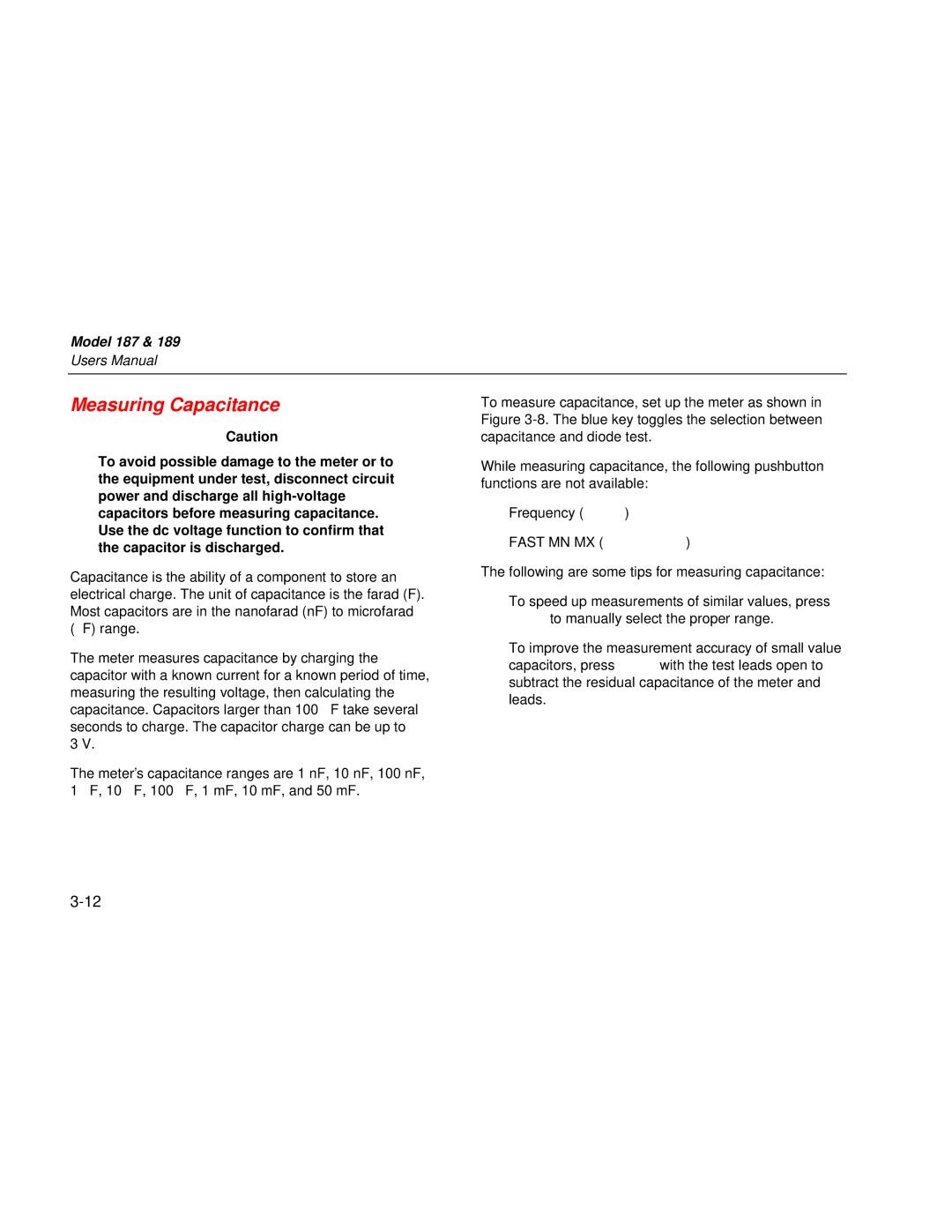Model 187 & 189
Users Manual
Measuring Capacitance
Caution
To avoid possible damage to the meter or to the equipment under test, disconnect circuit power and discharge all
Capacitance is the ability of a component to store an electrical charge. The unit of capacitance is the farad (F). Most capacitors are in the nanofarad (nF) to microfarad (∝ F) range.
The meter measures capacitance by charging the capacitor with a known current for a known period of time, measuring the resulting voltage, then calculating the capacitance. Capacitors larger than 100 ∝ F take several seconds to charge. The capacitor charge can be up to
3 V.
The meter’s capacitance ranges are 1 nF, 10 nF, 100 nF, 1 ∝ F, 10 ∝ F, 100 ∝ F, 1 mF, 10 mF, and 50 mF.
To measure capacitance, set up the meter as shown in Figure
While measuring capacitance, the following pushbutton functions are not available:
•Frequency ( N)
•FAST MN MX ( O M)
The following are some tips for measuring capacitance:
•To speed up measurements of similar values, press R to manually select the proper range.
•To improve the measurement accuracy of small value capacitors, press D with the test leads open to subtract the residual capacitance of the meter and leads.
